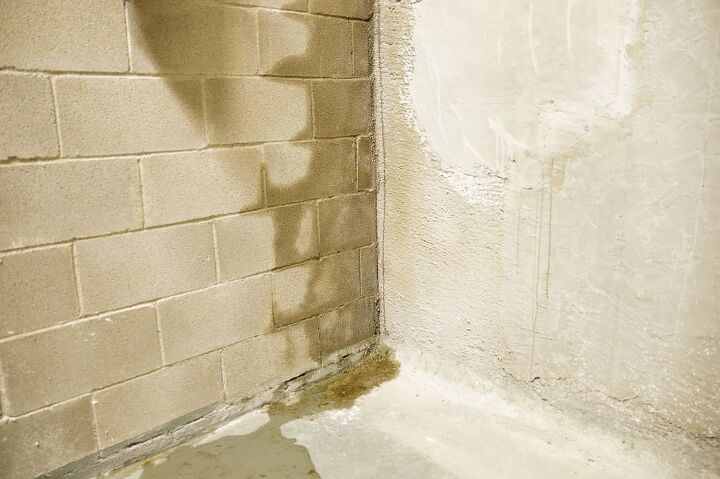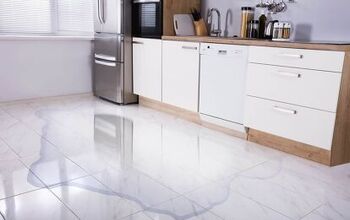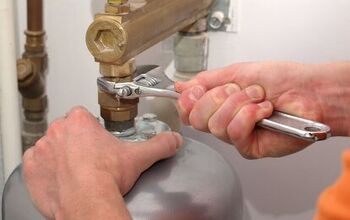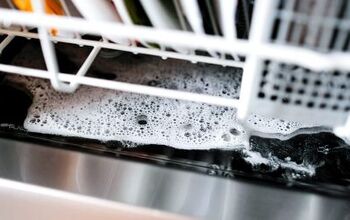Chimney Leaking Water Into The Basement? (We Have A Fix!)

If you have discovered that water is leaking into your basement from your chimney, it might have crossed your mind to just get rid of the chimney altogether. This is especially true if you do not use your fireplace. If that thought has crossed your mind, it is important to remember that the fireplace is not the only thing making use of your chimney.
The chimney serves as a vent for many different systems within a house, including the fireplace, HVAC system, and some appliances.
Water can leak into the basement from the chimney if there are cracks in the cap, crown, mortar, or bricks. Patch leaks in the flashing, tiles and roof tiles if the chimney leaks. Apply a water coating agent to your chimney crown to prevent water from leaking into your basement.
Do You Need Chimney Repair Services?
Get free, zero-commitment quotes from pro contractors near you.

Origins of Chimney Leaks
There are a few ways that water can leak into your home through the chimney. The first step in fixing your leaky chimney is to identify the source of the problem. By looking at the chimney in its various components, it becomes easier to identify potential weak points.
Keep an eye out for loose shingles, joint seals that have become eroded over time, as well as the state of the parts of the chimney.
Cap
The first line of defense for your chimney is the chimney cap. The chimney cap acts as an umbrella of sorts and sits elevated from the opening at the top of the chimney.
Crown
The next possible source of a chimney leak is the crown. The crown is a concrete slab that sits at the top of the chimney and provides a seal for the top of the chimney. Crowns are found on chimneys constructed from masonry.
Mortar and Bricks
Mortar joints, also known as grout, can also be a point of entry for moisture. When the grout breaks down, gets cracked, or chips away, water can find its way into your home. The same is true for the bricks, stones, or concrete slabs that the chimney is constructed from.
Flashing
Flashing also plays a crucial role in keeping water out of your home. When flashing is damaged in any way, water can easily get into your home in between the chimney and the roof.
Liner
The chimney liner can also be a source of water leakage into the basement. The chimney is used as a vent for many common household appliances such as boilers, water heaters, A/C units, and more. As moisture builds up inside of a chimney liner that is not functioning properly, that moisture ends up running down into the basement.
Roof Tiles
The state of the roof tiles above and surrounding a chimney can also cause water to leak into the house from the chimney. Although these leaks do not generally reach all the way down to the basement, it is still possible depending on the overall health of the chimney system.
As part of the troubleshooting process, be sure to check weak points in the roof to rule out water runoff as a source of the problem.
Repairing Your Chimney
The process that you will go through to repair your chimney will depend on the source of the problem. Whether the leak in your chimney is caused by the cap, the crown, the liner, the mortar, bricks, or flashing, there is a straightforward way to fix each.
Before jumping in with both feet, though, it is important to remember that leaks can result from multiple points of entry. Therefore, it is always a good idea to check every possibility before starting work.
Repairing the Cap
To repair the cap of your chimney there are a couple of approaches that you can consider. The easiest is often to reinstall a new cap that is designed for chimneys of your type and size. When damage is not too extensive, repairing any damaged or broken parts to make the cap watertight can often be enough to solve leakage issues.
Repairing the Crown
If the leaks in your basement are caused by a broken or cracked crown, there is a high likelihood that a rebuild of the crown may be necessary. If the damage is not too excessive, however, there are waterproofing coating agents that can be used to quickly solve the problem.
One of the most common products used to repair a damaged crown is aptly named CrownCoat. There are many other brands available as well, and each comes with its own pros and cons.
To use a coating product, you will first need to use a wire brush to remove any debris that could stop the product from making a good bond. After prepping the area, all that is required is to ‘paint’ the coating onto the crown and allow the new coating to dry.
It is important to note that if the cap is too broken for a simple seal, the entire crown should be removed and rebuilt.
Repairing the Mortar
If the mortar and bricks are the cause of the water leakage, you will want to remove all loose and broken mortar with a wire brush before adding in more mortar.
The process for repairing the grout between the bricks is called tuckpointing and the best approach depends of the climate, time of year, and extent of the damage. Once the mortar has been repaired, it is always a good idea to waterproof the mortar to ensure a long-lasting result.
Repairing the Flashing
Flashing problems can be quite extensive and repairing the flashing around the base of a chimney can entail a few different approaches. If the flashing is compromised, it is likely that there is also an issue with the roof tiles and underlayment.
To fix problems related to the flashing, it is considered best practice to remove the old flashing, allow the roof to completely dry and then reinstall new flashing to the base of the chimney.
Repairing the Liner
Methods for repairing leaks associated with chimney liners depend on the cause of the leaks. If the liner is blocked, clearing the liner should be the focus. For torn or broken liners, a liner replacement is often necessary.
To replace a liner in a chimney, the liner can be fed through the chimney from the roof after the old liner has been removed. Replacing a chimney liner is a straightforward process that can be done with little to no masonry work.
Waterproofing Chimneys
Apart from chimney repairs that can stop leaks from coming into your basement, it is also a good idea to use waterproofing agents to reduce the impact of moisture on the masonry. For chimneys made from materials other than concrete, stone, or brick, this step isn’t usually necessary.
There are many ways that chimneys can be waterproofed, but the two most common methods are sprays and wraps.
Waterproofing Sprays (Siloxane)
Once you are sure that there are no structural issues with the chimney, the flashing, or the surrounding roof tiles, you can apply a waterproofing spray that will help your chimney deter moisture for years to come.
Many of the waterproofing sprays contain up to 15% siloxane which has been found to be quite effective in protecting masonry and mortar joints.
To apply a waterproofing spray, it is always best to follow the instructions given for the particular product that you are using. Some will require one coat while others more than that. Some will recommend that you begin spraying from the top and working your way down while others will state the opposite.
Wraps
Wrapping a chimney can be an excellent way to quickly waterproof a chimney. It is especially useful for chimneys that have extensive damage that would be expensive to fix.
To wrap a chimney, all that is required is to clear away any old debris from the chimney exterior to allow for a smooth wrap. Holes and cracks in the bricks and mortar can largely be ignored as long as the chimney is still strong.
Using a membrane and blow torch, the chimney can be wrapped very quickly, and roofing tar can then be used to seal off any connection points.
Do You Need Chimney Repair Services?
Get free, zero-commitment quotes from pro contractors near you.

Related Questions
Is it normal for water to drip down my chimney?
It is not normal for water to drip into a basement from a chimney. If water is dripping down your chimney, it means that there is either a leak or condensation within your chimney system. Locating and fixing the problem is important if you see water leaks of any kind.
How much does it cost to repair a leaky chimney?
Depending on the cause of the leak and the extent of the damage, the cost associated with repairing a leaky chimney can range from $100 to $2000.

Benjamin is a proud homeowner who loves to write about DIY projects and home improvement projects. Traveling, perfecting his home, and spending time with his family are just a few of the many things that keep him inspired.
More by Benjamin Wright



























